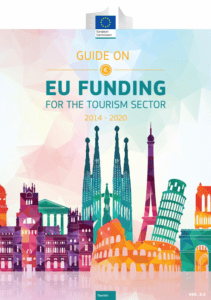Guide on EU funding for the tourism sector
The European Commission, Directorate-General GROWTH International Market, Industry, Entrepreneurship and SMEs, published the 2017 version of the Guide on EU funding for the tourism sector (2014-2020). The document can be downloaded here.
The guide has a useful compilation of all EU funding sources, both for the private and public sector, to start, improve or develop tourism-related activities. It gives practical answers on the type of actions supported, funding source available, and eligibility for each fund. Across the guide, you will find inspirational examples, to better help you choose the correct funding tool. The manual is also available in other European languages.
In Europe, tourism has a strategic importance as it is the third largest economic sector. According to the DG Growth, “a specific guide was necessary because of the diversity of the tourism sector’s needs and the range of EU thematic programmes that can consequently support it.”
This guide is of special importance to all Parks and partners working within the framework of the European Charter for Sustainable Tourism in Protected Areas.
Transboundary Parks – Award Ceremony 2017
The EUROPARC’s Transboundary Parks Programme aims to promote and facilitate transboundary cooperation between European Protected Areas. Since the Basic Standards evaluation system was launched in 2003, 23 European Protected Areas have been successfully certified as 10 Transboundary Parks under the EUROPARC programme “Transboundary Parks – Following Nature’s design”.
Every year during EUROPARC Conference we celebrate success with our Transboundary Parks at the Award Ceremony. In 2017, 2 members of the network were successfully re-evaluated, proving that working together for nature regardless political boundaries leads to better management of protected areas.
and the awardees were…
The Saxon-Bohemian Switzerland Transboundary Parks (DE/CZ)
Saxon-Bohemian Switzerland, also known under the geographic name Elbe Sandstone Mountains or Elbsandsteingebirge in German, is the largest sandstone rock region in Europe. The history of conservation dates back to the early 20th century when first nature reserves have been declared. However, the real transboundary work begins after World War II when a landscape protected area was established first on the German side (1956) and later on the Czechoslovak side (1972). They engaged with the Transboundary Parks Programme in 2012 and according to the verifier who conducted the re-evaluation:
The Saxon-Bohemian Switzerland parks form a great example of transboundary protected area cooperation with extremely professional staff and practices.
For the Award Ceremony, they left us a very nice film:
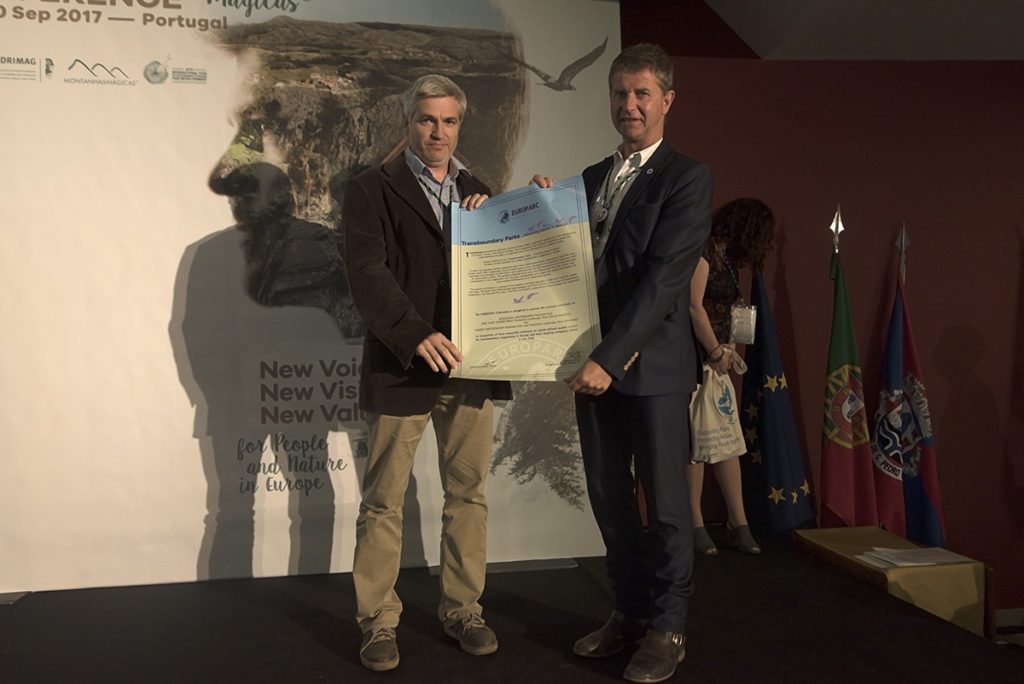
Handrij Härtel receiving the Transboundary Certificate at EUROPARC Conference 2017, Sao Pedro do Sul, Portugal
The German-Dutch Nature Park Maas-Schwalm-Nette (DE/NL)
The Nature Park Maas-Schwalm-Nette is located on the border of the German federal state North Rhine-Westphalia and the Dutch province Limburg. Within 800 km2 rivers, forests, heathland, bogs and varied cultural landscapes make it a very special attraction. In the heart of the park lie 10.000 ha of forests and nature reserves of European importance (NATURA 2000). The Park was first certified in 2007 and re-evaluated in 2012. According to the Verifier who conducted the re-evaluation process,
At the moment TB Nature Park Maas-Swalm–Nette is the only example inside EUROPARC Transboundary program, that has developed united system of management with one office and representatives of the parties work shoulder by shoulder every day. This is good example, which should be spread to other transboundary territories.
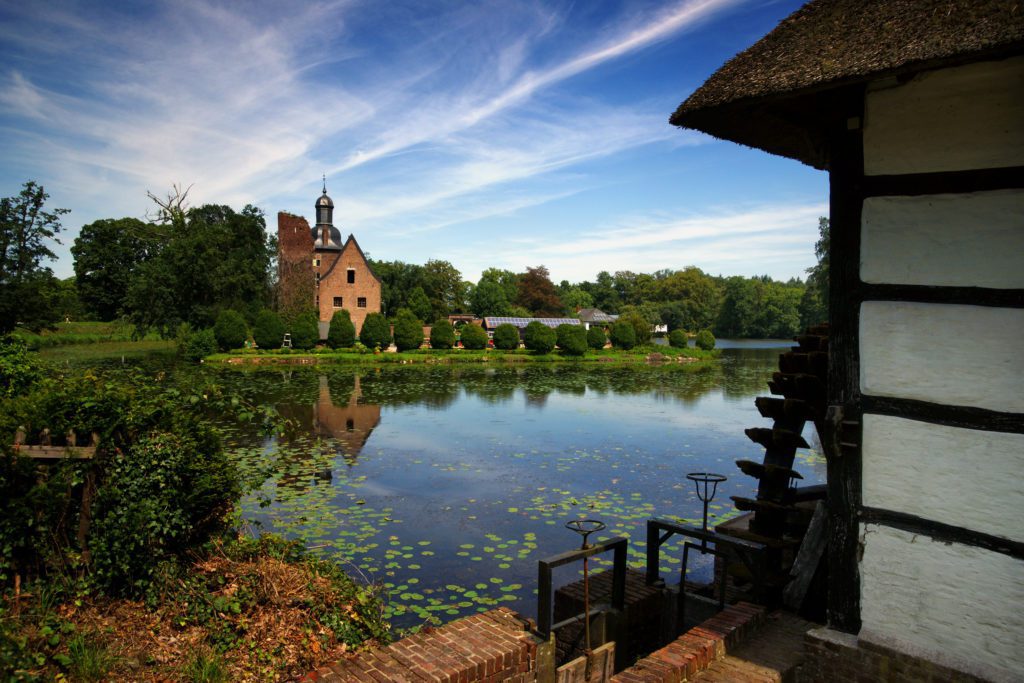
The German-Dutch Nature Park Maas-Schwalm-Nette
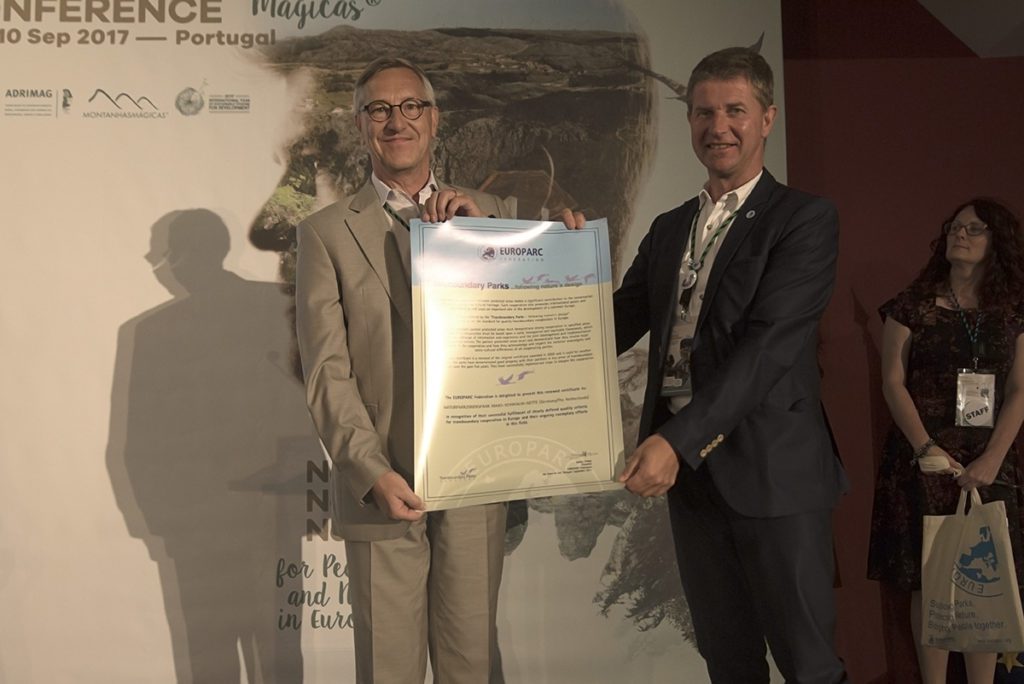
Leo Reyrink from the Netherlands receiving the Transboundary Certificate at EUROPARC Conference 2017, Sao Pedro do Sul, Portugal
Get to know more about the Transboundary Parks Programme and the other members of the TransParcNet.
Alfred Toepfer Scholarship Winners 2017
Alfred Toepfer Scholarship winners at EUROPARC Conference 2017, Sao Pedro do Sul, Portugal (winners: from left to right: Zerrin Karaarslan, Csaba Bereczki and Carmen Martínez) © Eduardo Realinho
Every year, the Alfred Toepfer Natural Heritage Scholarships (ATS) supports the work of young conservationist in protected areas across Europe. EUROPARC and the Alfred Toepfer Stiftung award 3 scholarships to young professionals willing to make study trips in European Protected Areas. The Award ceremony took place at EUROPARC Conference, in Portugal, get to know the winners of the 2017 edition!
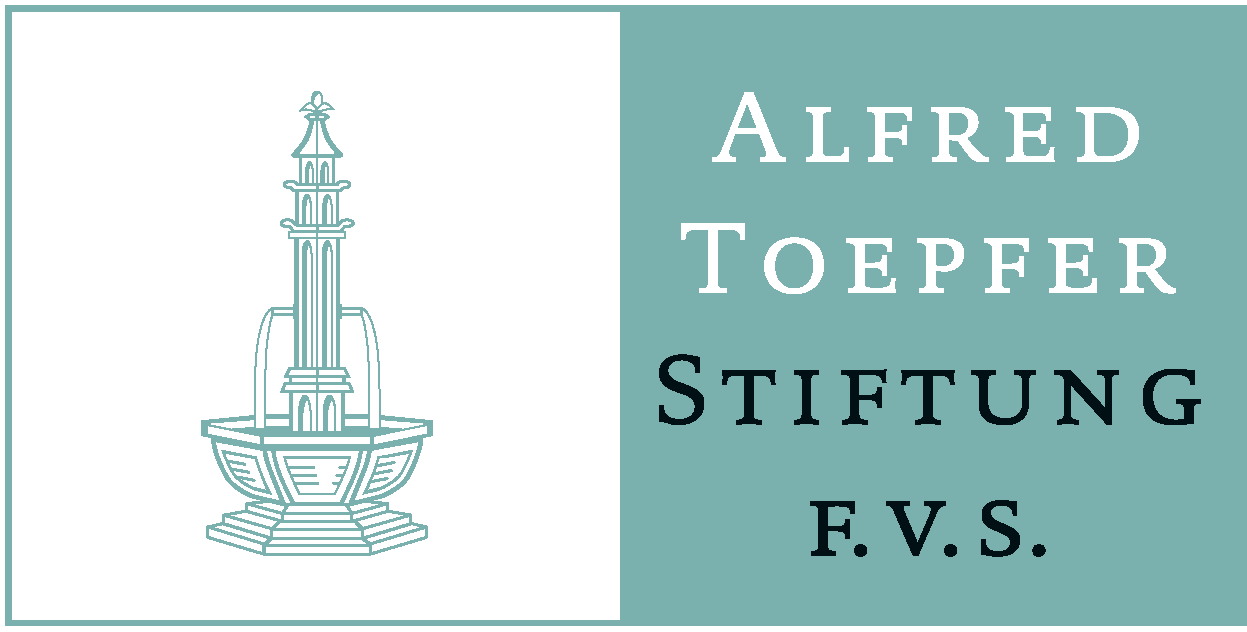
Carmen Martínez, Spain
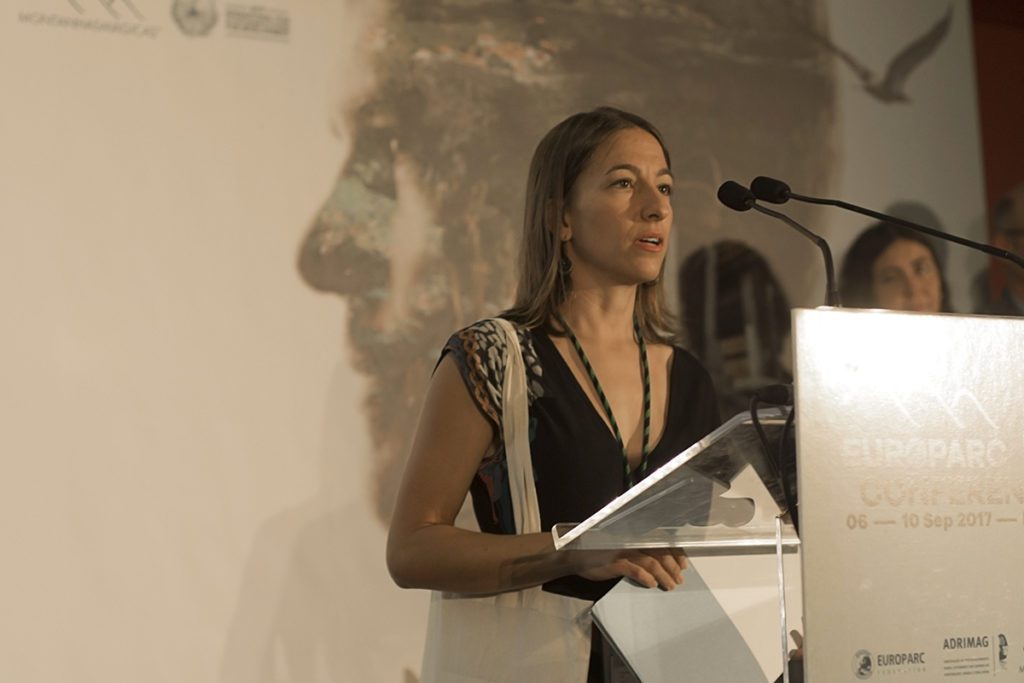
Area of work: Sustainable development in protected areas – contribution to a resource-efficient, green and competitive low-carbon economy
Carmen Martínez is an Environmental Technician, working for ANSE, a regional ONG aimed Nature Conservation for more than 10 years, and a Lecturer in Methods Area of Experimental Sciences at Faculty of Education at the University of Murcia. Nowadays, she is engaged in the protection of Mar Menor, a Mediterranean Coastal Lagoon, establishing a management plan and involving inhabitants and workers in its conservation.
Ms. Martínez will be visiting Protected Coastal Wetlands from 3 different countries (UK, France and Albania), with distinct management, social involvement strategies and status, in order to learn with their experience how they are planned and managed. By meeting with meeting managers and stakeholder, she expects to establish general guidelines for coastal wetland management, find ways to involve locals and stakeholders, mainly traditional sectors as artisanal fishermen, and starting a network of NGO working in wetland conservation.
Csaba Bereczki, Hungary
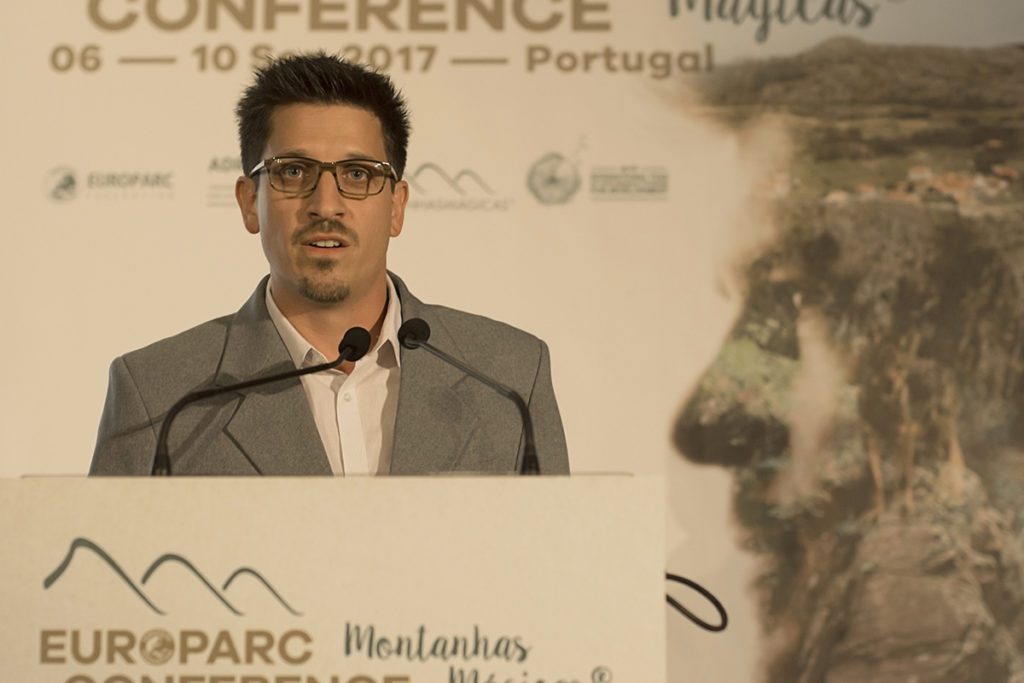 Area of work: Importance of values of N2000 sites and protected areas on reducing impact of climate change and implementing the EU Biodiversity Strategy
Area of work: Importance of values of N2000 sites and protected areas on reducing impact of climate change and implementing the EU Biodiversity Strategy
Csaba Bereczki is currently working as biologist/project coordinator at Hortobágy National Park Directorate, Hungary. Csaba will broaden his knowledge about invasive alien species, the spreading of which is among the biggest nature conservation issues nowadays. He will collect information about species within the Carpathian-basin and also species that are likely to appear in the near future. During his study trips, he will focus on different best-practice methods of eradicating these species, and also how these methods could be adjusted to local conditions. Besides, he is interested in laymen and tourists involvement to the eradication of invasive alien species.
Csaba selected three Hungarian National Parks (Bükk National Park, Kiskunság National Park, and Fertő-Hanság National Park), two Czech National Parks (Sumava National Park and Podyji National Park), one Polish National Park (Bierbza National Park) and one Nature Park from Croatia (Medvednica Nature Park) to visit in 2018. The experience and knowledge that hopefully gathered during his study trips will help Csaba and his Directorate to combat against recent threatening invasive species and to prepare in advance against those that likely to appear because of global climate change.
Zerrin Karaarslan, Turkey
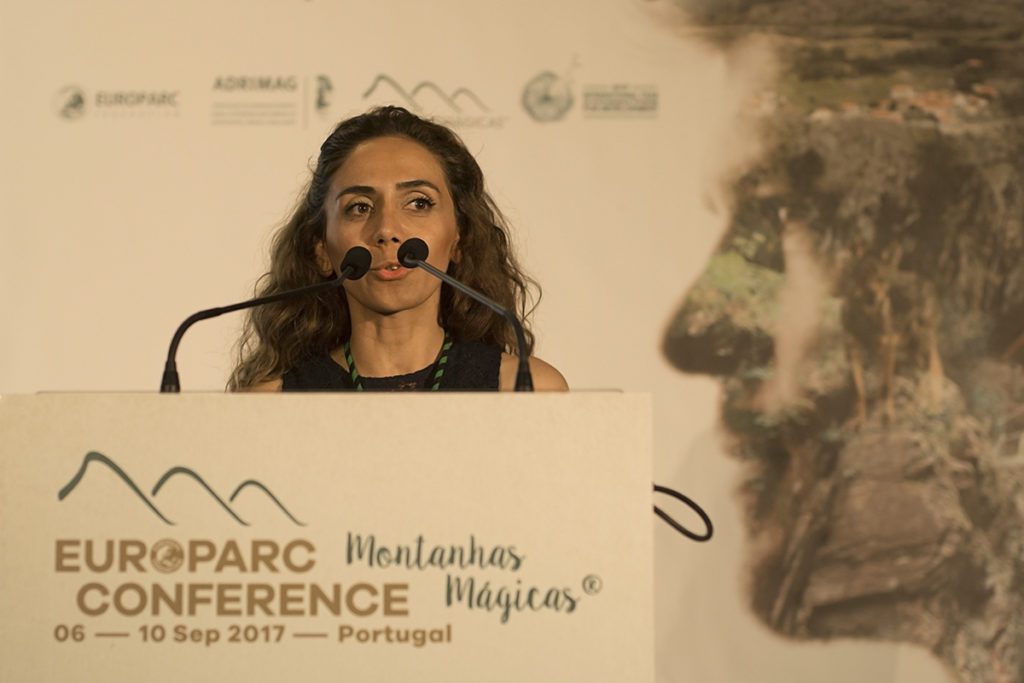 Area of work: Contribution of protected areas to safeguard European citizens from environment-related pressures and risks to health and wellbeing
Area of work: Contribution of protected areas to safeguard European citizens from environment-related pressures and risks to health and wellbeing
Zerrin Karaarslan is a Landscape Architect working for Ministry of Forestry and Water Affairs General Directorate of Nature Conservation and National Parks, Turkey. She is also Ph.D. Candidate in Ankara University Graduate School of Natural and Applied Sciences. In order to enhance her knowledge on the benefits of ecological restoration on protected areas as means of ecosystem health and human health, she will make study visits to the best restoration practices at different ecosystem types.
Zerrin will be visiting Doñana National Park and Sierra de Guadarrama National Park in Spain and Bavarian Forest National Park in Germany. As a technical staff working for the ministry, she will offer her gained experience to the restoration of degraded ecosystems in Turkey and enable the conservation of one of the richest biodiversity values of the region.
Keep tuned, we will be opening a new call for applications in the 1st trimester of 2018!
All information will be available at www.europarc.org/natural-heritage-scholarships
The management of mountain forest habitats in N2000 sites: Networking Seminar
Zhůří near Keply, Šumava National Park (CZ) © Štěpán Rosenkranz
The management of mountain forest habitat types in Natura 2000 sites: experience and case studies from the Continental Biogeographical region
The Natura 2000 Biogeographical Process
Date: 7–9 November 2017
Location: Šumava National Park, Czech Republic
In the course of recent years, the management of mountain forest habitat types has become a more challenging priority for managing authorities at European level. In particular, in the Continental region, managers are being confronted with several issues, mainly related to bark beetle infestations, water regime maintenance, and restoration and, in many cases, also the need to plan and structure cross border cooperation regimes. In addition, considering that significant parts of mountain areas are also designated by national legislation for the protection of natural processes, this adds more complexities for harmonizing plans, setting conservation objectives and for the implementation of conservation measures.
This seminar is proposed as a networking event that brings forward the discussion started in the course of the Continental Biogeographical Seminar that took place in Luxemburg in June 2015.
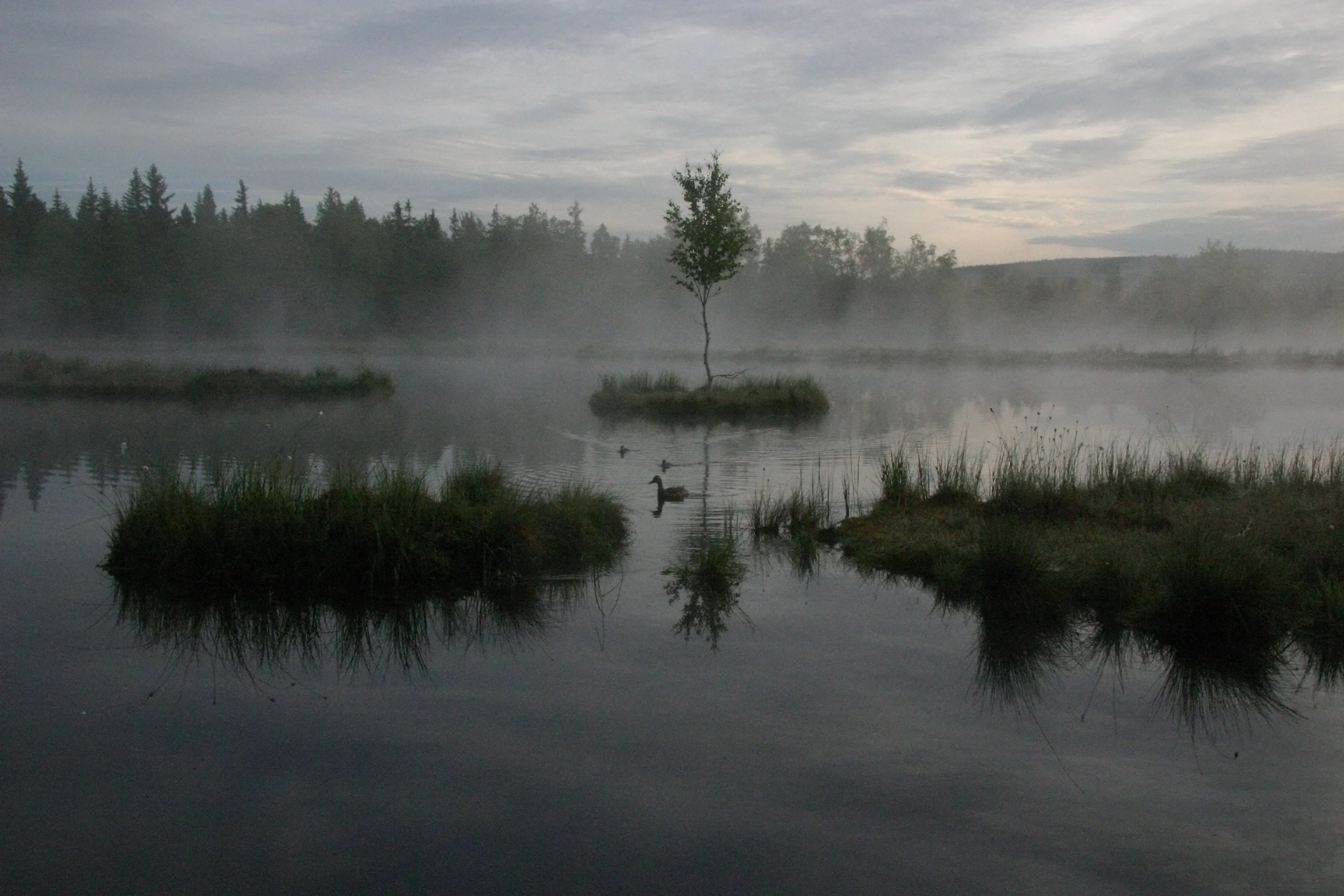
Peat pond – Borová Lada, Svinná Lada, Chalupská slať – Sumava National Park
Outline of the Networking Event
EUROPARC, in cooperation with the Šumava National Park (CZ), and with the support of the EUROPARC Central Eastern Europe Section, will organise a Networking Seminar to address issues related with the management of Mountain Forest Habitats in the Continental Region.
The two days seminar, addressed to managers, experts and authorities with responsibilities for site management, will give the opportunity to exchange practical experience in management of mountain forests as part of Natura 2000 sites. New scientific findings will be presented, contributing to improve the understanding of natural processes in mountain forests in the Continental region.
The long-lasting experience of the Šumava National Park in the management of Mountain forest, together with the fruitful cross border cooperation established with the Bavarian Forest National Park (Germany), will offer an important baseline for a constructive learning exchange among participants. During the course of the seminar, case studies will be presented focusing on:
- restoration of water regime,
- bark beetle management,
- nature based forest management
- and the impact of those measures on Natura 2000 sites and their targets.
A site visit to the Bohemian forest will contribute to maintaining a strong connection between theory and practice for the effective management of mountain forest habitats.
Due to logistics reasons, the Seminar will be open for a maximum of 40 participants.
Register here
Mountain Forest Habitats_Full Programme
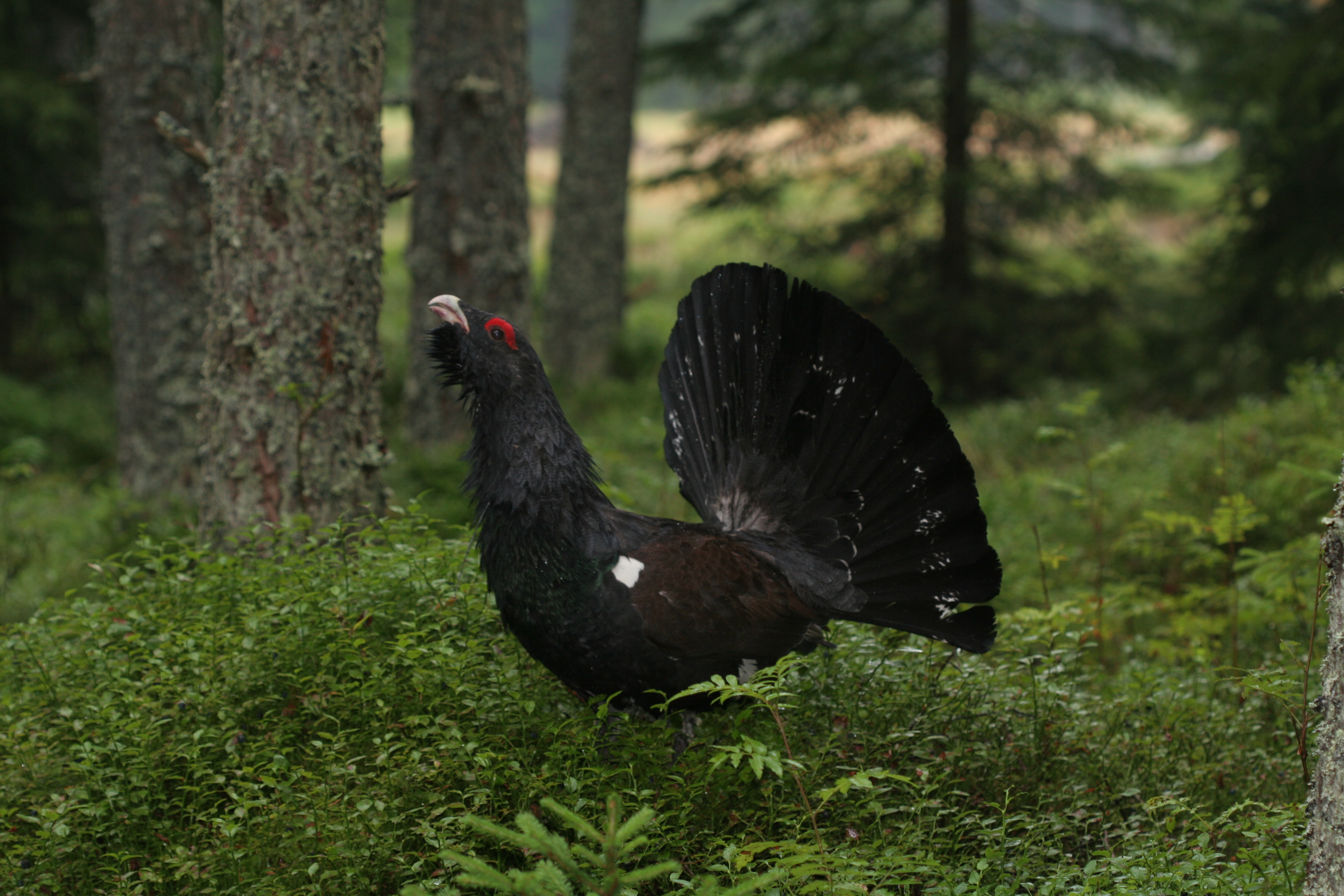
The western capercaillie (Tetrao urogallus)
is seriously threatened by habitat degradation, particularly conversion of diverse native forest into often single-species timber plantations. The population that lives in the Sumava National Park (CZ) represents one of the few larger Capercaillie populations residing in medium altitude mountains in central Europe
Photo by Marek Drha, Sumava National Park (CZ)
Provisional Agenda
Tuesday 7. 11. 2017
- 15:00 – 16:00 Registration
- 16:00 – 18:00 Welcome to the Šumava National Park (introduction to the seminar goals, introductory presentations, clarification of expectations from participants)
- 19:00 – 20:00 Dinner
- 20:00 – 22:00 Social evening
Wednesday 8. 11. 2017
- 7:30 – 8:30 Breakfast
- 9:00 – 9:15 Introduction of the Natura 2000 Biogeographical Seminar Process – EUROPARC Federation
- 9:15 – 11:00 Implementation of Natura 2000 in mountain areas in different countries, moderated by Michael Hošek (EUROPARC)
- 11:00 – 11:30 Coffee break
- 11:15 – 13:00 Forest management and its impact on Natura 2000, moderated by Martin Starý (Šumava NP)
- 13:00 – 14:00 Lunch break
- 14:00 – 15:45 Wetlands and restoration measures, moderated by Ivana Bufková (Šumava NP)
- 15:45 – 16:30 Conclusions
- 17:00 – 19:00 Visit of the Visitor Center with wolf enclosures
- 19:00 – 20:00 Dinner
- 20:00 – 22:00 Social evening
Thursday 9. 11. 2017
- 7:30 – 8:30 Breakfast
- 9:00 – 12:30 Field trip: Bark beetle management 10 years after the Windstorm Kyrill
- 13:00 – 14:00 Lunch break
- Farewell coffee and departure of participants
Venue
Center of Environmental Education – Horská Kvilda (CEE), Šumava NP, Horská Kvilda 2, 385 01 Vimperk, GPS: 49.058193, 13.557677
Accommodation
The event is free of charge, but participants are asked to cover their travel costs to the venue.
The Sumava National park is pleased to offer accommodation in the environmental education centre of Horska Kvilda, in shared rooms.
For those preferring single rooms, we recommend you contact the following hotels: Pension Hones or http://uryplu.sumava.net/uryplu/default.asp or http://www.horskakvilda.cz/celorocni-ubytovani.html
Please indicate your preference when registering, and note that hotel rooms are at the own charge of participants.
How to get there
By plane Prague Airport (Letiště Václava Havla) or Munich Airport.
By train Plattling Hbh, Bayerisch Eisenstein,
By car Horská Kvilda 2, GPS: 49.058193, 13.557677
For additional information please contact Martin Starý martin.stary@npsumava.cz; +420 731 530 474#
organised by:

